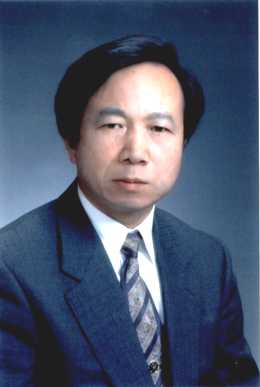RESEARCH

Professor Norio TERAMAE
Science has been progressed by both exploring new research targets and developing new analytical methods to examine them. Analytical chemists have devoted themselves to create novel chemical systems as well as to develop new analytical tools since the era of alchemy.
Our research is directed toward understanding of molecular functions in the confined reaction fields such as membranes, interfaces, meso-porous channels, and small cavities formed in assembled molecular systems. One of the major part of our research is to investigate molecules at the solid/liquid and liquid/liquid interfaces using various analytical methods sensitive to such confined reaction fields. The second major part of our research is to develop sensing systems based on supramolecular chemistry, host-guest chemistry, photochemistry, electrochemistry, and biotechnology. The third part of our research is to explore unusual reactions and synthesizing functional materials, paying an attention to the characteristics of the confined reaction fields.
On going projects are as follows
- Detection of SNPs by hydrogen-bonding fluorescent receptors using abasic DNA.
- Assmblies of functionalized guanosine as chemical sensors and functional materials.
- Chemical sensing based on supramolecular systems.
- Colorimetric and fluorescent chemical sensors
- Molecule recognition at the solid-liquid and liquid-liquid interfaces.
- Assembled mesoporous channels as chemical sensors and functional materials.
- Chemically modified nano-crystals as chemical sensors and functional materials.
etc...
To pursue above projects,
following various analytical tools are used
- Time-resolved total internal reflection fluorescence spectroscopy
- Resonant second harmonic generation spectroscopy
- Confocal fluorescence/Raman microspectroscopy
- Electrochemical scanning tunneling microscope
- Scanning electron microscope
- Ion transfer polarography
- Surface tension measurements
etc...
Selected Research Works
- Gene analysis and related area
- J. Am. Chem. Soc., 125(30), 8982-8983 (2003). [DOI: 10.1021/ja029786m]
- Chem. Commun., 2003(24), 2960-2961. [DOI: 10.1039/b309229a]
- Talanta, 63(1), 175-179 (2004). [DOI: 10.1016/j.talanta.2003.09.027]
- Anal. Chim. Acta., 556(1), 133-139 (2006). [DOI: 10.1016/j.aca.2005.05.064]
- Chem. Commun., 2006(11), 1185-1187. [DOI: 10.1039/b516575j]
- Angew. Chem. Int. Ed., 45(10), 1563-1568 (2006). [DOI: 10.1002/anie.200502979]
- Meso-structured membranes and related area
- Nature Materials, 3(5), 337-341 (2004). [DOI: 10.1038/nmat1107]
- Anal. Chim. Acta., 556(1), 157-163 (2006). [DOI: 10.1016/j.aca.2005.06.029]
- J. Phys. Chem. B, 106(9), 3910 - 3916 (2006). [DOI: 10.1021/jp0564086]
- Chem. Lett., 35(12), 1352-1353 (2006). [DOI: 10.1246/cl.2006.1352]
- Chem. Commun., 2007(11), 1160-1162. [DOI: 10.1039/b615369k]
- Liquid-Liquid and solid-liquid interfaces
- J. Phys. Chem. B, 107(20), 4786-4792 (2003). [DOI: 10.1021/jp026163m]
- Chem. Lett., 34(7), 988-989 (2005). [DOI: 10.1246/cl.2005.988]
- Chem. Lett., 32(9), 798-799 (2003). [DOI: 10.1246/cl.2003.798]
- Anal. Bioanal. Chem., 386(3), 627-632 (2006). [DOI: 10.1007/s00216-006-0470-x]
- The Analyst, 128(6), 663-669 (2003). [DOI: 10.1039/b301141k]
- Tetrahedron Lett., 45(22), 4273-4276 (2004). [DOI: 10.1016/j.tetlet.2004.04.001]
- Fluorescent chemo-sensors, electroanalytical chemistry, etc.
- J. Mater. Chem., 15(27-28), 2755-2761 (2005). [DOI: 10.1039/b500958h]
- J. Electroanal. Chem., 563(2), 249-255 (2004). [DOI: 10.1016/j.jelechem.2003.09.018]
- Chem. Lett., 33(5), 568-569 (2004). [DOI: 10.1246/cl.2004.568]
- Electrochem. Commun., 8(3), 395-398 (2006). [DOI: 10.1016/j.elecom.2005.12.021]
- Chem. Commun., 2006(22), 2376-2379. [DOI: 10.1039/b517391d]
etc...
See also, PUBLICATION.










